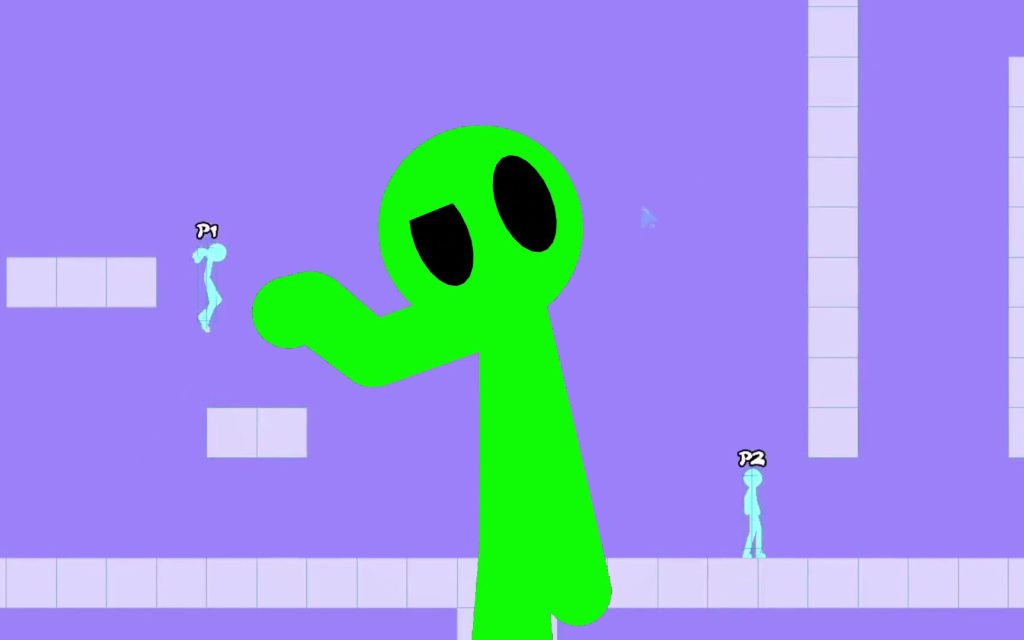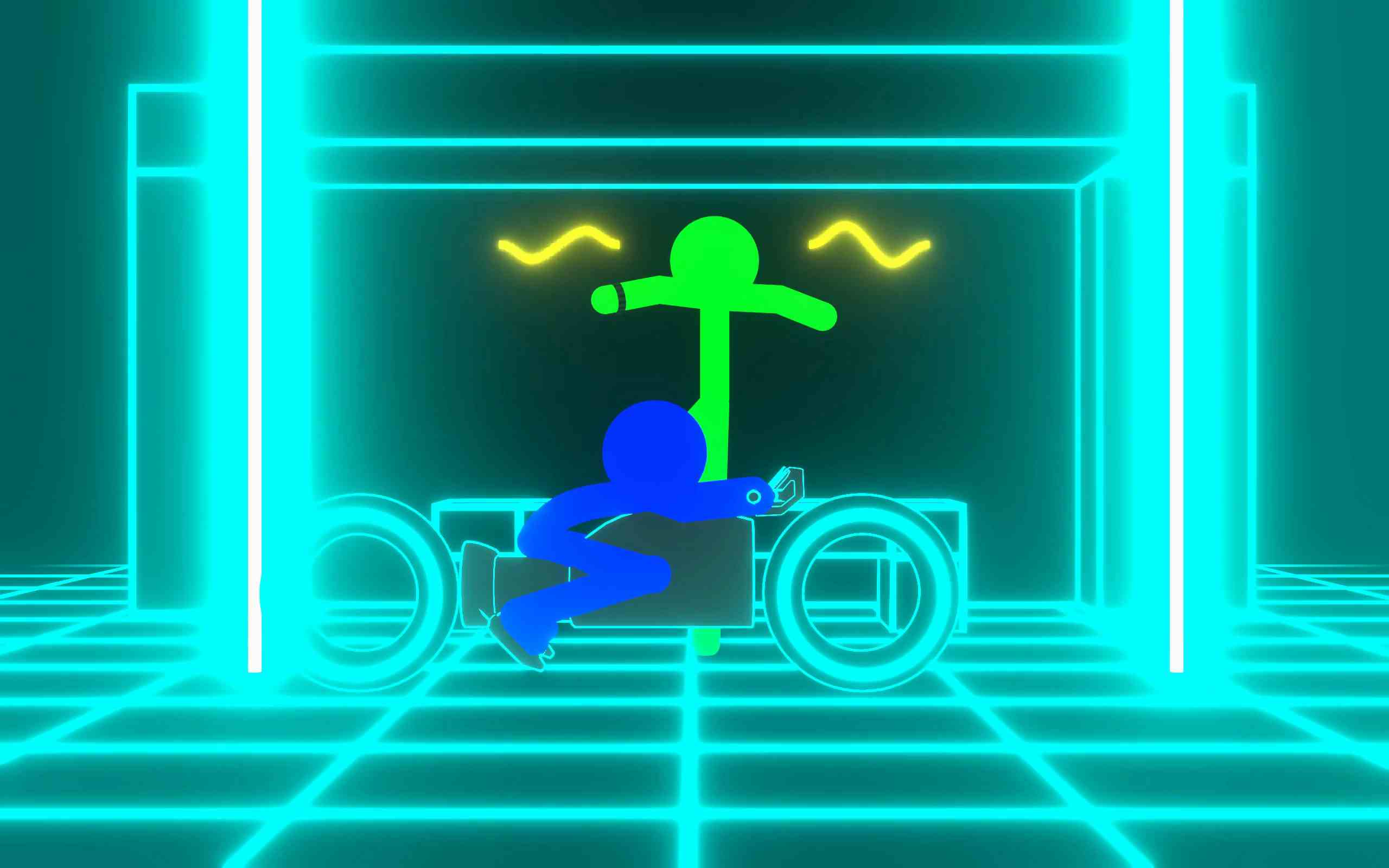相对论诠释(文本、动画、配音)
吴笛:大家好,我制作了一段诠释爱因斯坦相对论的简短动画。这只是关键帧版本,不是完整版本。请给我一些建议,告诉我哪些部分需要改进。谢谢!
备注:吴笛正在为BJC准备视频,以上是他在Schoolhouse的留言(译文)。
版本一:时空
简要介绍了时空的概念及其复杂性,特别是通过爱因斯坦的狭义相对论和广义相对论来理解时空。视频解释了光速在不同观察者面前的恒定性,以及引力作为时空弯曲的表现,而非传统的力。通过简单的例子,视频展示了这些理论的基本原理,并强调了我们对时空的理解仍在不断进步。
字幕 | Transchripts
中文
0:00: 时空。
0:01: 这是一个如此广阔而神秘的维度,它将空间和时间视为相互关联且不可分割的,创造了一个四维连续体,这构成了我们观察、体验和互动的一切。
0:15: 时空非常复杂,我们只是触及到了表面,但我们可以通过我们老朋友阿尔伯特·爱因斯坦学到很多。
0:24: 你可能知道他是那个提出E=MC²方程的著名科学家。
0:30: 在20世纪初,他开始了对宇宙的革命性探索,而他的旅程始于狭义相对论。
0:40: 狭义相对论基本上意味着像你我这样的观察者在观察某物时不会加速或减速。
0:47: 比如说,如果我骑自行车以非常高的速度行驶,而另一个人静止地站在平台上,我们两人测量到的光速将是相同的常数值,即使我们的运动非常不同。
0:59: 顺便说一下,他是鲍勃。
1:01: 假设我要快速经过鲍勃。
1:04: 此时,两束激光击中了我和鲍勃的两侧,对于鲍勃来说,两束激光似乎同时击中。
1:12: 但对于我这个骑在自行车上的人来说,我会先看到前面的激光,然后看到后面的激光。
1:19: 这只是狭义相对论中的一个小例子,自爱因斯坦在1905年发表后。
1:25: 十年后,爱因斯坦发展出一种新的理论,称为广义相对论,这是一个更全面的理论,包含了引力。
1:33: 关键见解是,引力并不是牛顿所描述的那种力,而是由质量引起的时空结构的弯曲。
1:40: 简单来说,质量告诉时空如何弯曲,时空告诉质量如何运动。
1:46: 还有很多我没有涵盖的,比如黑洞和时间膨胀,我们对时空仍然知之甚少。
1:54: 但我知道的是,我们正在一点一点地理解时空。
1:57: 谢谢观看。
English
0:00: Space time.
0:01: Such a vast and mysterious dimension, it treats space and time as interconnected and inseparable, creating four dimensional continuum, which makes up everything we observed experience and interact.
0:15: Spacetime is very complex and we barely scratch the surface, but we can learn a lot about it with our good old friend Albert Einstein.
0:24: You might have known him as the famous scientist who formulated the equation E equals MC squared.
0:30: Well, in the early 20th century, he embarked on the revolutionary exploration of the universe where his journey begins with the special theory of relativity.
0:40: Special relativity basically means observer like you and I which are not speeding up or down to observe something else.
0:47: Let’s say this if I were to ride a bike and that I’m traveling at a very high speed while there’s another person standing still on a platform, we both will measure the speed of light as the same constant value even though our motion is very different.
0:59: By the way, he’s Bob.
1:01: And let’s say I’m going to zoom past Bob Lorette.
1:04: At that time, two lasers strike at the two sides of me and Bob for Bob, the two lasers seems to strike at the same time.
1:12: But for me who is riding on a bike, I would see the laser in front of me first and then see the laser behind of me.
1:19: This is just a small example of what special theory of relativity have after Einstein published it in 1905.
1:25: 10 years later, Einstein developed a new theory called this general theory of relativity, which is a more comprehensive theory that includes gravity.
1:33: The key insight is that gravity isn’t a force as new described but rather a curvature in the fabric of space time caused by mass.
1:40: Simply to say that mass tells space time how to curve.
1:43: Space time tells mass how to move.
1:46: There’s still a lot, I haven’t covered like black holes and time dilation and we still didn’t know a lot about space time yet.
1:54: But what I do know is we’re understanding space time.
1:57: Little by little.
1:58: Thanks for watching.
版本二:光速
主要讲解了阿尔伯特·爱因斯坦的狭义相对论,特别是光速在所有观察者面前恒定的特点。视频通过简单的场景可视化这些概念,解释了光速恒定的重要性及其对观察的影响,使复杂的物理概念更易于理解和接近。
字幕 | Transchripts
中文
0:00: 我们都听说过阿尔伯特·爱因斯坦的狭义相对论,对吧?
0:03: 它探讨了光速及其令人着迷的特性。
0:07: 但让我们退一步思考一个基本问题,你可能会想,光到底是什么?
0:14: 好吧,它使我们能看到事物,你是对的。
0:18: 但让我们更深入地了解为什么光对所有观察者都必须是恒定的,并找到一种可视化的方法。
0:24: 爱因斯坦,这位背后有着标志性方程 E=MC² 的天才,提出了一个有趣的观点。
0:31: 如果光不是恒定的,它可能会加速、减速,甚至会有不同的速度,这会导致我们观察上的混乱。
0:38: 更进一步,比如说,如果我们看同一个物体的方向,比如一个立方体,你可能会比我先看到立方体。
0:45: 除此之外,我们俩甚至可能看到立方体在闪烁,因为光不是恒定的,每个光子到达我们眼睛的速度都不同,这让我们觉得立方体在闪烁。
0:55: 顺便说一下,光在真空中的速度是惊人的 299,792 公里每秒,这相当于在赤道上绕地球约 7.5 圈只用一秒钟。
1:08: 现在,这就是我们要讨论的速度。
1:12: 让我们设想一个场景。
1:14: 想象一下,我骑着一辆自行车以接近光速的速度移动。
1:17: 不要问我是怎么做到的,当我以高速经过站在原地、两侧有激光的尼安时,我会先看到前面的激光,再看到后面的激光,因为我的高速和光的恒定速度。
1:28: 对于站在原地的尼安来说,由于我们运动的巨大差异,这两束激光同时出现。
1:35: 你可能会想,如果尼安靠近其中一束激光会怎样?
1:40: 我会说,光的惊人速度使得这种差异几乎不可察觉。
1:44: 即使尼安靠近一束激光,我以接近光速的速度移动,仍然会先看到前面的激光,再看到另一束。
1:51: 这就是我们简要探讨光为什么是恒定的以及如何可视化它惊人的速度的一瞥。
1:58: 谢谢观看。
English
0:00: We’ve all heard of Albert Einstein’s special theory of relativity, right?
0:03: It delves into the speed of light and its fascinating properties.
0:07: But let’s take a step back and ponder a fundamental question, what exactly is light you might think?
0:14: Well, it’s the stuff to make us see things and you’ll be correct.
0:18: But let’s dive deeper into why light have to be constant for all observers and find a way to visualize it.
0:24: Einstein, the genius behind the iconic equation E equals MC squared raises an intriguing point.
0:31: If light weren’t constant, it could accelerate decelerate and even be a different speed leading to confusion in our observation.
0:38: And more, for instance, if we look at the direction of the same object, let’s say a cube, you will probably saw the cube first before I did.
0:45: Other than that, we both might even saw the cube blinking since light isn’t constant, every single photon will have a different speed to reach our eyes, which makes us think the cube is blinking.
0:55: By the way, life can travel at an astonishing 299,792 kilometers per second in a vacuum, which is like completing about 7.5 laps around the earth at the equator in just one second.
1:08: Now, that’s the speed we’re talking about to illustrate.
1:12: Let’s envision a scenario.
1:14: Imagine I’m riding a bike moving nearly at the speed of light.
1:17: Don’t ask me how as I zoom past Neon, who is standing still with two lasers on his sides, I’ll see the front laser before the back one resulting of my high speed and lights constant velocity.
1:28: For neon who is standing still, both lasers appear simultaneously due to the vast difference in our motions.
1:35: You might wonder what if neon is closer to one of the lasers?
1:40: Well, I say the incredible speed of light makes the difference barely noticeable.
1:44: Even if neon shift closer to a laser, I moving at nearly the speed of light still perceive the front laser before the other.
1:51: And there you have it a brief exploration into why light is constant and a glimpse of how to visualize its astonishing speed.
1:58: Thanks for watching.
关于BJC——
开发日志(动画)
受热门系列《降世神通》的启发,吴为开始设计游戏,并同吴笛一起创作了开发日志。通过追踪他们每周的设计进度,吴为和吴笛展示了游戏开发的幕后过程,涵盖了编程、动画设计、音效合成、视频制作,甚至是营销策略等各个方面。






